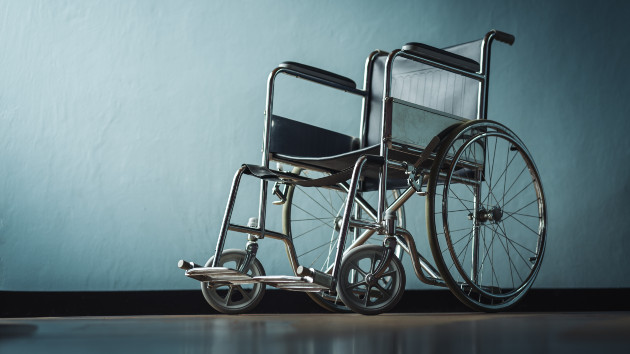(NEW YORK) — A pediatric doctor is sharing the holiday gifts parents should avoid giving kids – and it’s not because she wants to be a Grinch.
Dr. Meghan Martin, a pediatric emergency medicine physician at Johns Hopkins All Children’s Hospital in St. Petersburg, Florida who shared her expert advice in an Instagram video, told “Good Morning America” the products that tend to cause the most injuries seen in pediatric emergency departments, both during and after the holiday season.
Here are Martin’s top five kids’ gifts to skip:
Any toy with button batteries
Button batteries are typically about 20 millimeters in diameter, or between the size of a penny and a nickel, according to the National Capital Poison Center. They’re used in a wide variety of household items and products, including hearing aids, key fobs – and children’s toys.
“The majority of the injuries from button batteries are going to be from swallowing them,” Martin explained, adding that the screws typically used to secure the batteries inside products can easily loosen.
“A lot of times, it doesn’t go all the way to the stomach [after swallowing],” Martin said of button batteries. “It gets stuck in the esophagus or occasionally the airway and then in that position, it starts to create burns in those tissues and a lot of tissue damage in that area.”
That tissue damage in the esophagus and chest, Martin said, puts children particularly at risk of developing “blood vessel injuries [and] airway issues.”
“These can be very dangerous and this can absolutely be fatal,” Martin added.
If parents are concerned a child has swallowed a button battery, Martin recommends calling 911 and, if the child is older than twelve months, giving the child honey while waiting for emergency medical care.
“You can administer small sips of honey every couple of minutes on the way to the emergency department,” Martin explained. “It can decrease the risk of burns and tissue damage, and it can actually be lifesaving.”
In addition to battery consumption, Martin said young kids can also “occasionally stick smaller button batteries, like watch batteries or hearing aid batteries, into their ears or to their nose.”
“You can also have injuries in those locations – again, that kind of tissue damage, tissue breakdown from the battery itself,” she said.
Any toy with water beads
Water beads, according to Martin, are often marketed as “sensory toys,” but the risks they pose can be extremely significant.
“They’re polymers that if ingested, they can swell,” Martin explained. “They can cause things like bowel obstructions, even perforations. They can get stuck in airways because they’re about the size of a small child’s airway, so it’s also a choking hazard.”
Electric scooters
The main reason Martin doesn’t recommend electric scooters and other similar toys, like electric bicycles, is their speed potential.
“They really can get going pretty quickly and if you hit a crack in the sidewalk or a bump in the road, you can easily become dislodged from that scooter,” Martin said. “And if you’re going fast, your face is also going to be going fast as you come towards the road or the sidewalk.”
Martin said they often see head injuries, facial injuries and forearm fractures with electric scooter accidents.
Overall, Martin said she doesn’t recommend giving any electric scooter to a kid. “These can be really dangerous,” she said. “And we’re seeing a lot of injuries with kids crashing on these.”
As an alternative, she recommends giving “kid-powered” scooters, without electricity or motors.
Aside from getting kids active, Martin said kid-powered scooters may also be “good for development of those kinds of fine motor skills, gross motor skills, strength [and] endurance.”
It is always recommended that all children wear helmets when riding scooters.
Hoverboards
Self-balancing scooters, more commonly known as hoverboards, can also land a child in the emergency room.
“The most common injuries I see from hoverboards are forearm fractures and elbow fractures,” Martin said. “We have seen some head injuries from it. We have seen some lower extremity, like ankle and knee injuries, too.”
Plus, Martin pointed out, hoverboards and their batteries have been reported to cause fires and electrical issues.
Trampolines
Of all the hazardous toys she has seen cause injuries in children, Martin said trampolines are the worst offender. Martin said in the pediatric ER, they see trampoline injuries “probably a couple times a week.”
“We see kids getting hurt in all different ways on trampolines,” Martin said. “Mostly it’s going to be leg injuries. But we do see things like arm injuries, elbow injuries – even head injuries and back injuries, sometimes, when doing backflips, neck injuries. So there are a variety of injuries that kids can get on trampolines. And we do see them relatively commonly.”
Martin said she doesn’t recommend trampolines for home use at all because of the risks they pose.
In general, Martin advises parents and caregivers to inspect any toy thoroughly before buying or giving it to a child.
“It’s important to just make sure that the toy is made with quality and the parts are secure and that all the pieces are there that need to be there,” Martin said.
Copyright © 2023, ABC Audio. All rights reserved.












